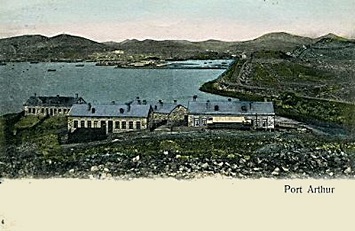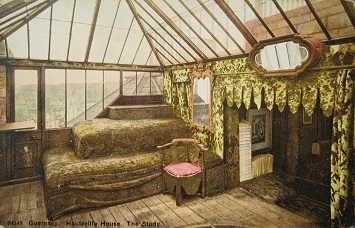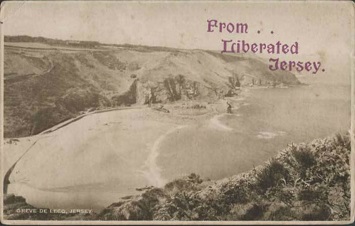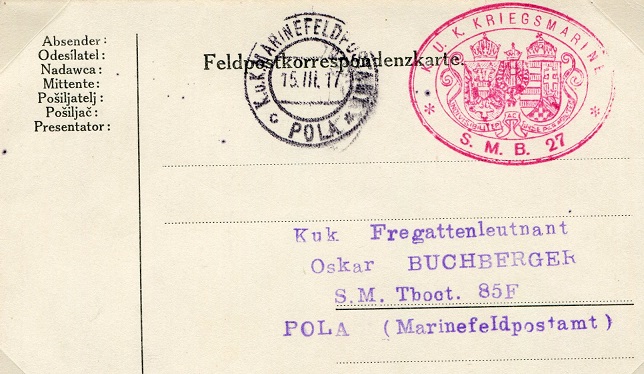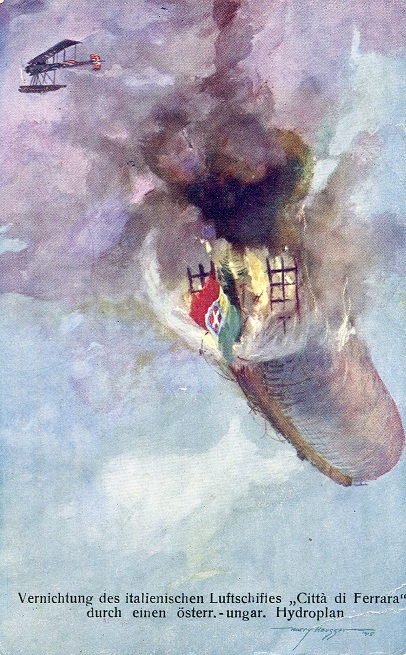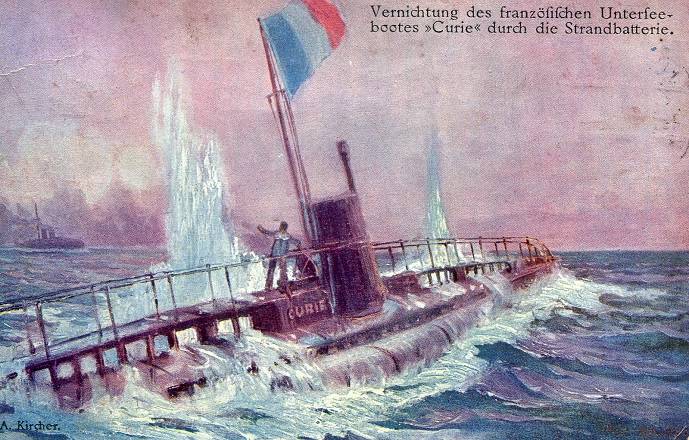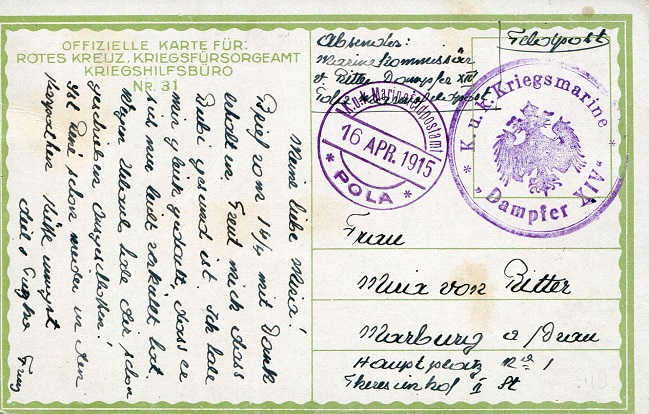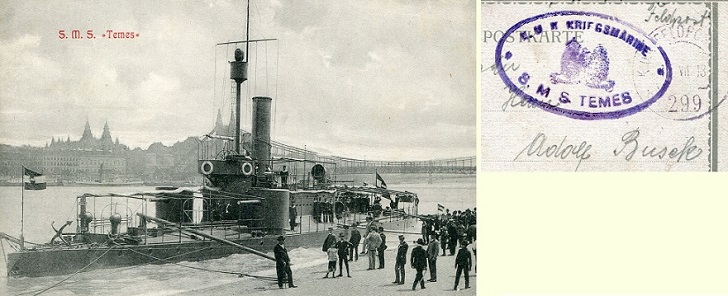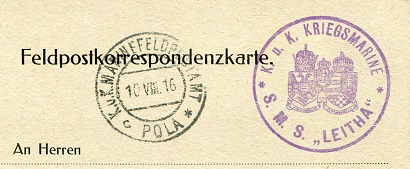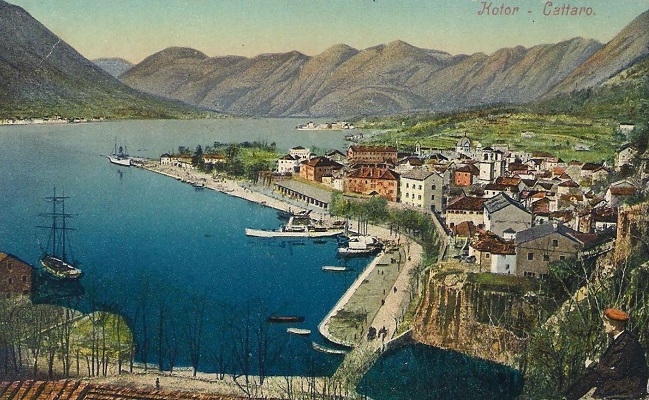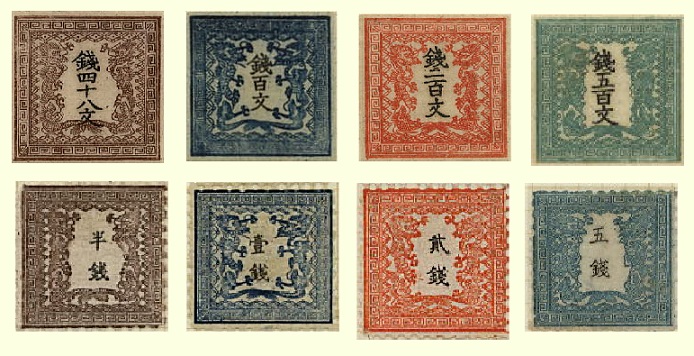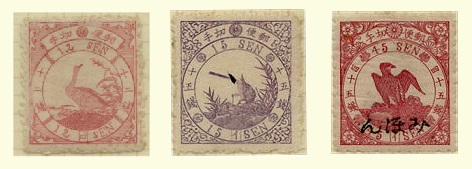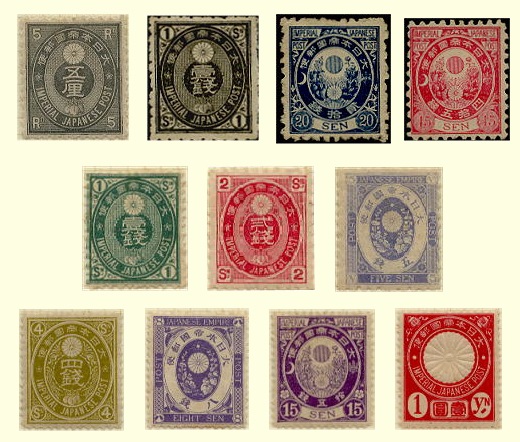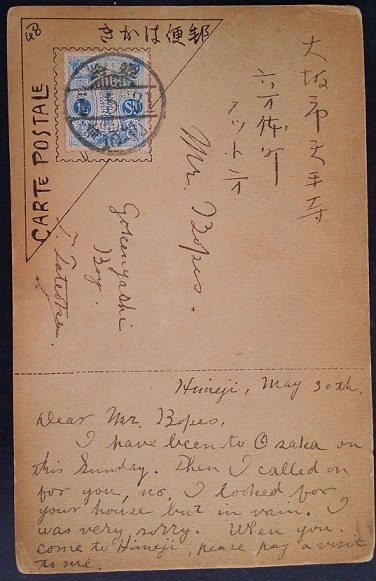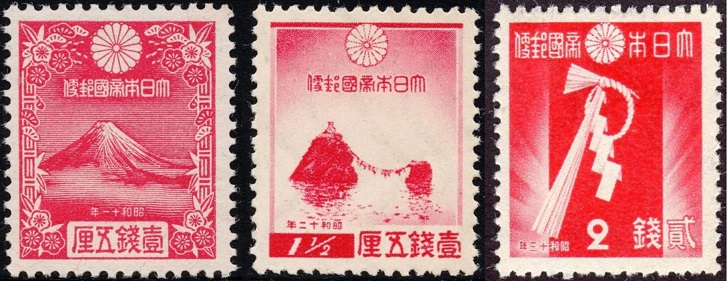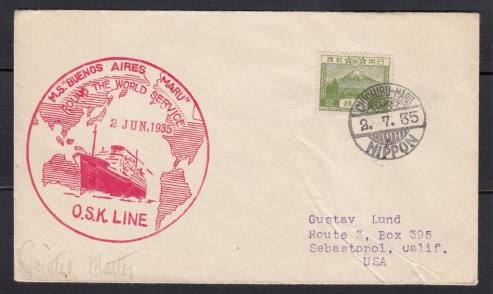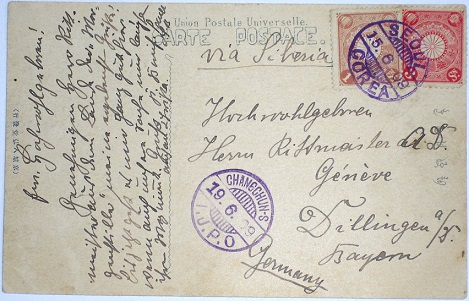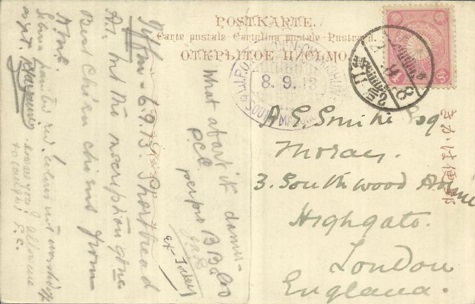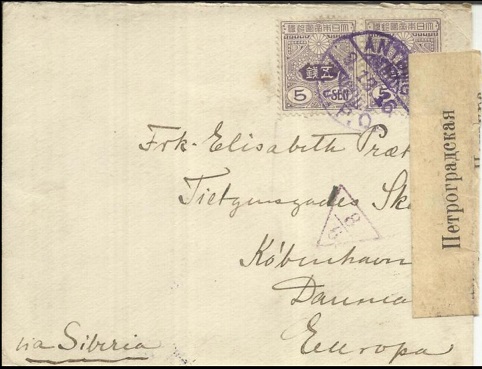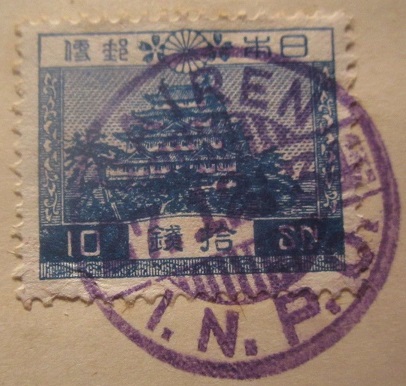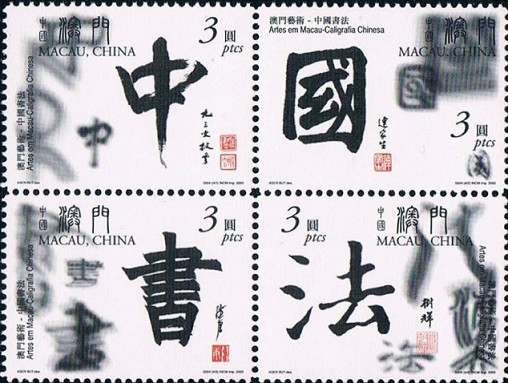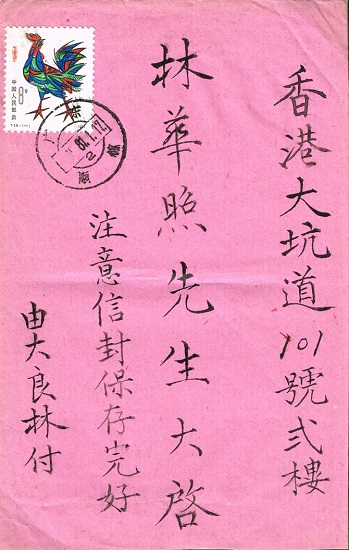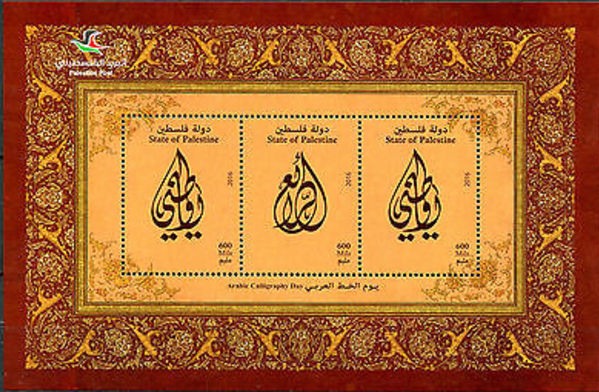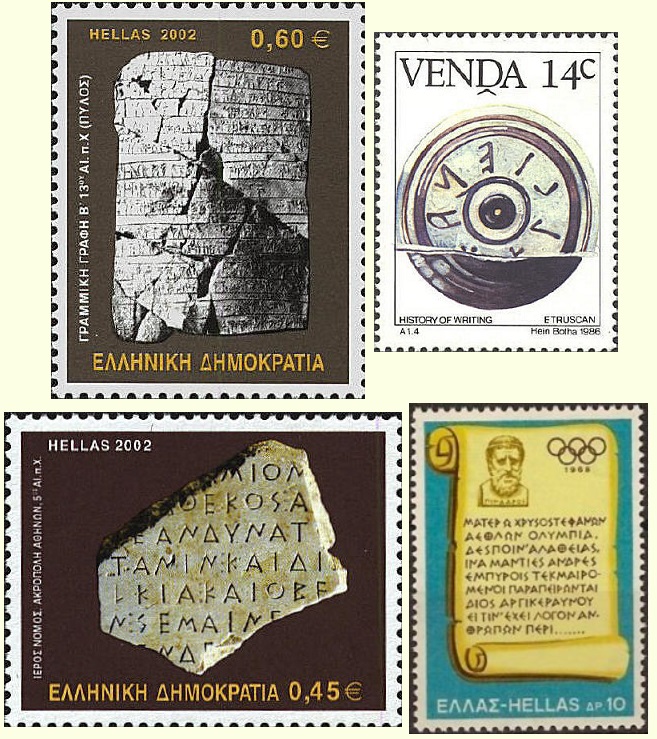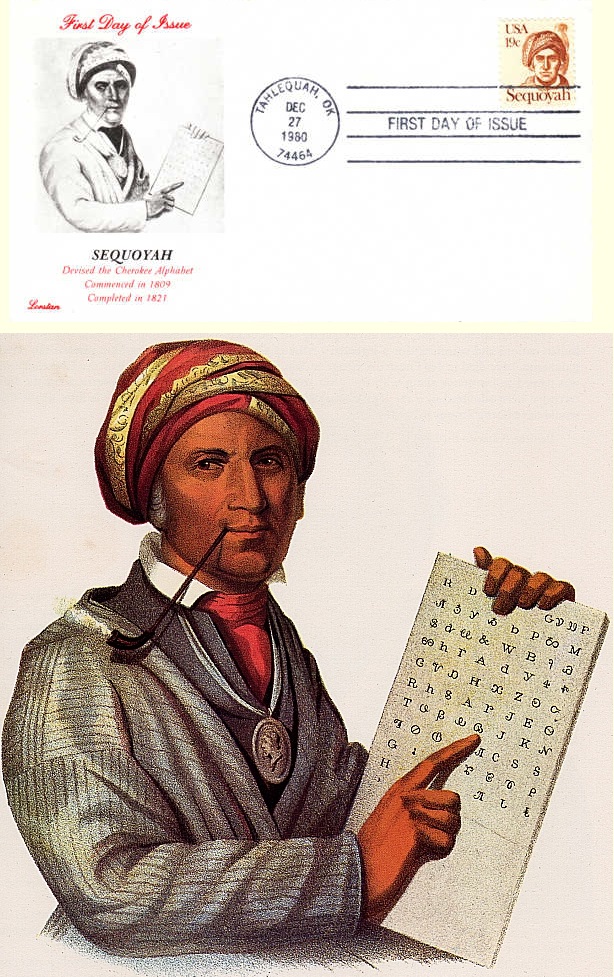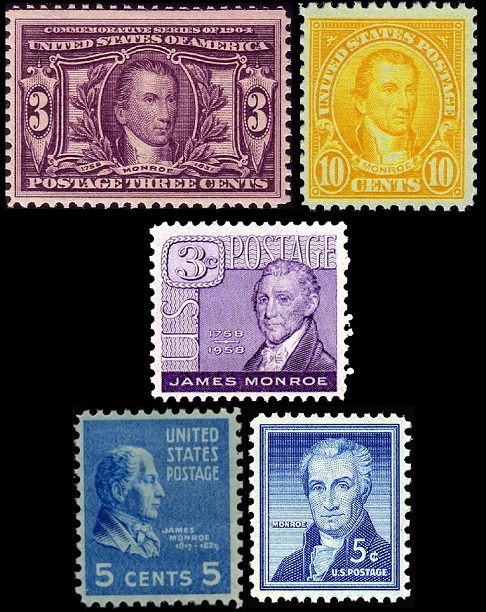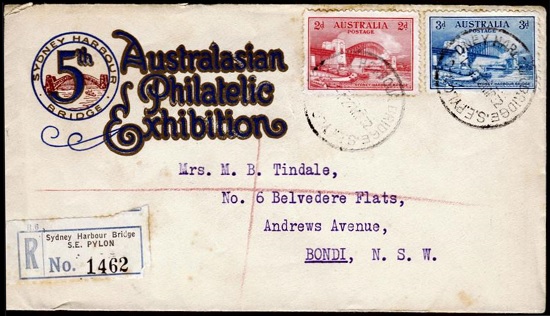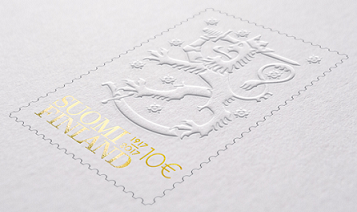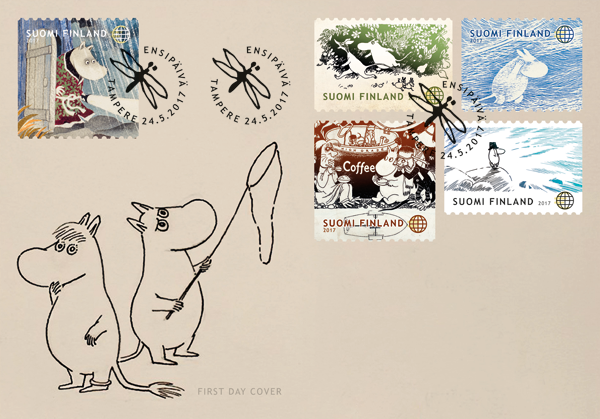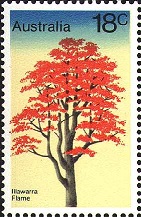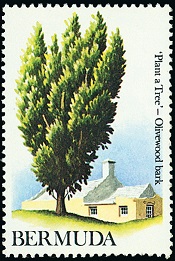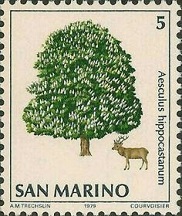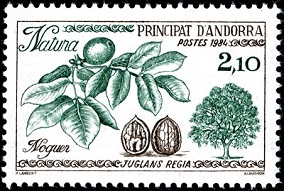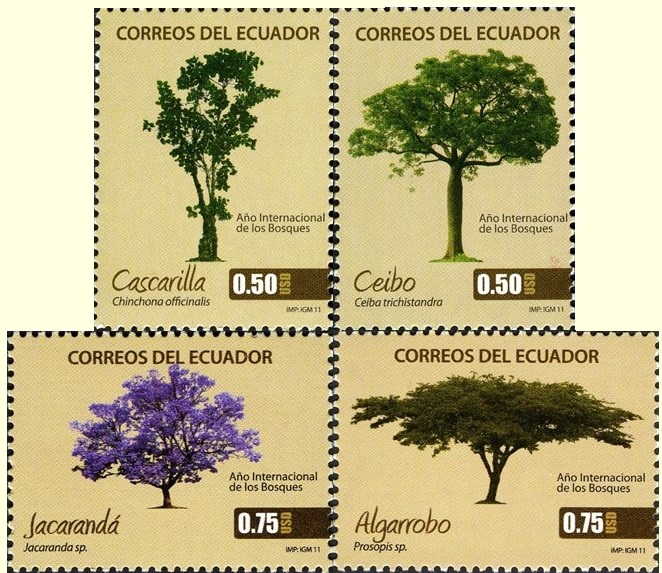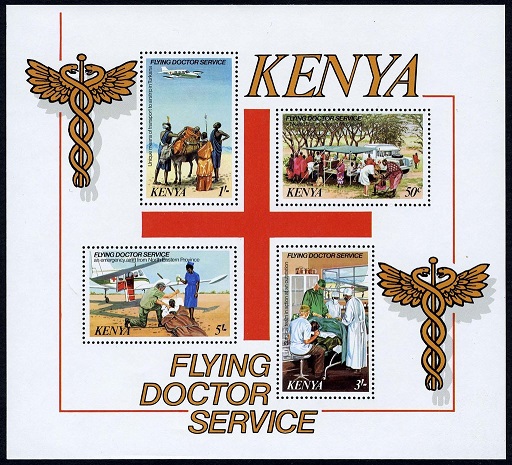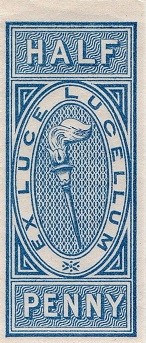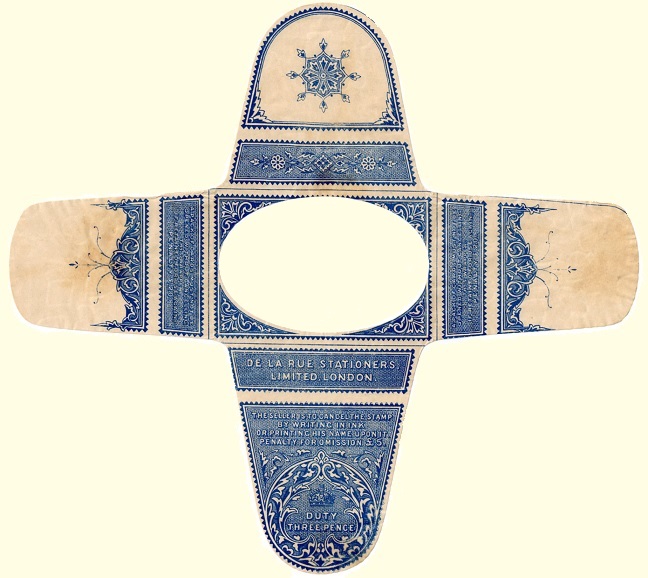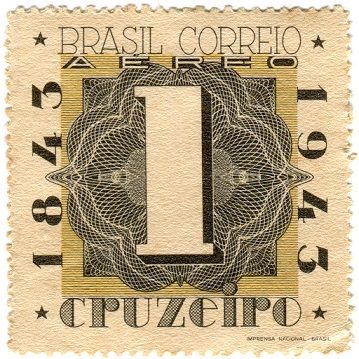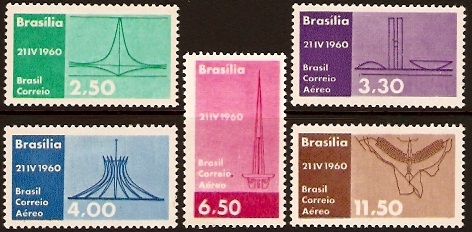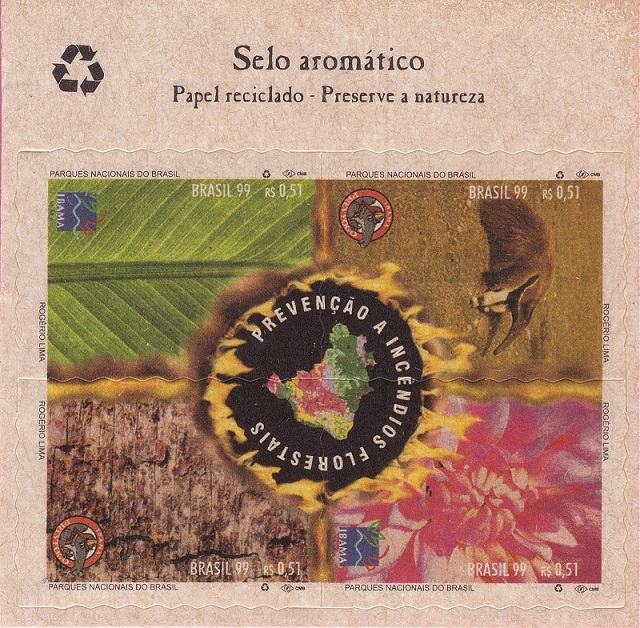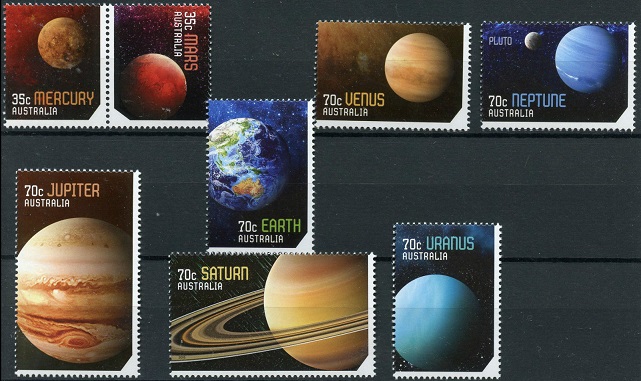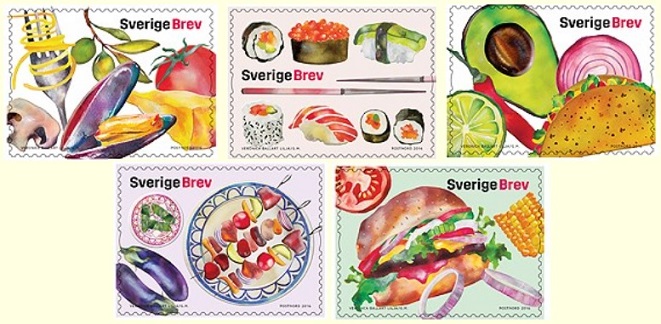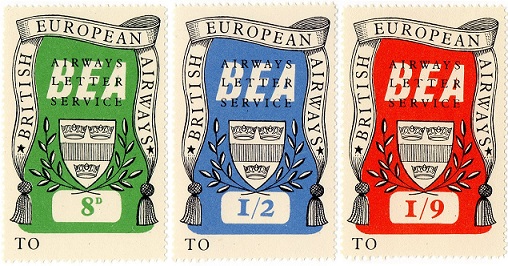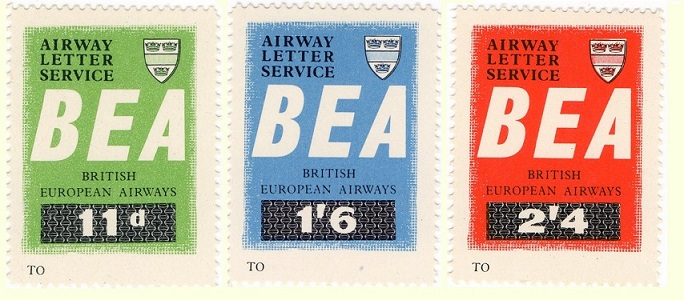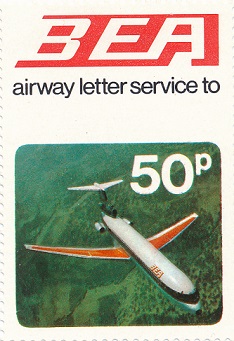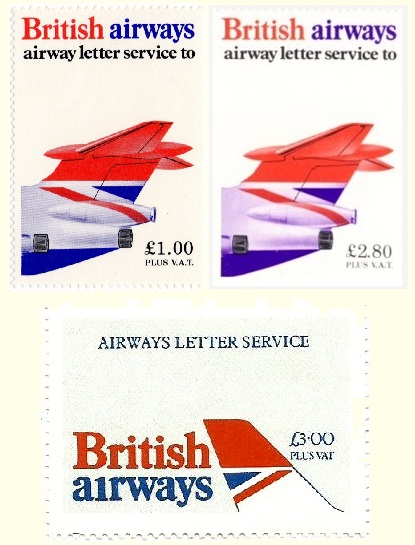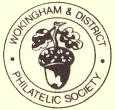
News Archive: 2017 |
|
12th December 2017 - Christmas Meeting After the usual introductory remarks, Christine Earle displayed an impressive range of Christmas-related material. The first part of the display was devoted to Forces material. She began with Christmas Cards from 1939-1944 from a range of sources in various theatres of war. These were followed by a US card, then a series of cards by Roland Davies depicting tanks and warships. These are difficult to date, but certainly date from after the US entered the Second World War. The next section showed examples of PoW Christmas mail, and was followed by a selection of Air Letters, including the Free Christmas Post in India 1944 and a Victory Year card. Christine's display continued with an impressive range of Airgraphs with Christmas pictures and greetings. She also explained how Airgraphs were prepared and delivered. The final section of the display was entitled "Greetings from Sydney" and included postcards for Christmas and other occasions, with pullout cards and cards featuring a Koala and a Kangaroo.
After the members had viewed this interesting material, Susan Greenwood showed a range of GB varieties, beginning with the missing 'T' on the 3d stamp of the 1966 Christmas issue and including a range of missing and displaced colours.
Michael Curling displayed a range of cards from Victorian times onwards that showed ferns, followed by a couple of Military Cards, including one from Nepal. He ended his display with a 1948 letter that was the transcription of a message on a 78rpm record that he showed in its original packaging, which had been used to send a Christmas message.
After having viewed the displays, the assembled company then enjoyed the excellent spread of Christmas food prepared for them by Marianne Murray, Susan Greenwood and Alwyn Lowe, before making their way home on what had turned into a wet night. 14th November 2017 - An Evening of Postcards
The meeting opened with the presentation of certificates to the three members who had won their classes in the Thames Valley Federation 16-sheet Competition: Christine Earle in the Thematic Class, Trevor Cornford in the Open Class and Eric Holmes in the Postal History Class. This was followed by a discussion about car parking in Wokingham with all the changes taking place in the town.
Mark Bailey thanked all who had brought material and remarked that, once again, it showed the diversity of members' collecting interests. Thames Valley & District Philatelic Federation 16-sheet Competition 2017
Congratulations to the members of the Wokingham & District Philatelic Society who entered the Thames Valley & District Philatelic Federation's 2017 16-Sheet Competition, which was held in conjunction with the fair at Loddon Hall, Twyford on 5 November. Our members achieved the following results:
24th October 2017 - The Items Speak For Themselves
The following members presented a maximum of 15 sheets of material in a "Silent Display", without any spoken word of explanation:
All the showings attracted questions as people were viewing the displays. Mark Bailey thanked all who had come and brought such a diverse range of material. 26th September 2017 - Austro-Hungarian Navy Mail in World War 1 - Lindy Bosworth FRPSL
At the start of the meeting, the Honorary Secretary Patrick Reid reminded members that he was looking for entries for the Thames Valley 16-sheet competitions, and needed them by 26th October. Deputy Chairman Alwyn Lowe announced that the South of England fair would be at Salisbury in October, rather than Farnborough, because of parking problems in Farnborough. There will also be a fair next April at Bracknell Leisure Centre.
Within the Austro-Hungarian Empire there were at least 11 ethnic groups and languages, with German as the official language. Naval personnel came from all over the Empire, so officers were required to speak four of these languages whilst ratings had to speak some Croat and Italian and understand orders given in German. The main naval base was at Pola, and there were other ports and facilities along the Adriatic coast, with the most southerly base at Cattaro (Kotor). All vessels had their own cancellers of various designs. Cancellers and censor marks were applied by the on board censor to validate the mail for onward transmission to the marine post office at Pola, the civilian system or occasionally the nearest military field post office. Originally the main civilian post office at Pola was used but in 1915 a dedicated marine post office was opened (Marine Feldpostamt). The first cancellers of three different designs were made of rubber and quickly wore out to be replaced in May 1915 by metal ones which were in use until the end of the war. Ordinary mail was free but other services such as registration and express had to be paid for. Several examples of registered mail were in the display.
The Navy had a total of 16 battleships allotted in five classes, from the oldest completed in 1890s to the most modern. The SMS Szent Istvan was the final battleship of the Navy to be built and was not completed until December 1915. Most of the battleships were illustrated with some of their varied dedicated cancels. Lindy's display was structured to show examples of the range of vessels in the Navy from the larger vessels through to smaller vessels. At the outbreak of war Marine Kommandant Admiral Anton Haus was Commander in Chief of the Navy but he died of pneumonia during February 1917 on board the flagship of the fleet, SMS Viribus Unitis. This was one of the four most modern battleships of the fleet. She was sunk in Pola harbour by an Italian mine on 1 November 1918. The most modern battleships spent the war at their moorings in Pola harbour, only venturing to sea for a raid on Italian installations on the Adriatic coast after their declaration of war on 23 May 1915. It was the cruisers, destroyers, torpedo boats and submarines which plied the Adriatic to prevent its use by the Allies.
At the outbreak of war one of the armoured cruisers, SMS Kaiserin Elisabeth, a steel-hulled vessel of 3,967 tons displacement with a crew comprised 450 officers and men, was on a tour of duty in the Far East and made for the German naval base of Tsingtao. Tsingtao was besieged by the Japanese on 25 August 1914. At Tsingtao with Kaiserin Elisabeth were the Imperial German Navy light cruiser Cormoran, gunboats Iltis, Jaguar, Tiger and Luchs and the torpedo boat S90. On 6 September 1914 a Japanese Farman MF.11 aircraft launched by the seaplane carrier Wakamiya unsuccessfully attacked Kaiserin Elisabeth with bombs. Early in the siege Kaiserin Elisabeth and Jaguar made a sortie against the Japanese. The two newest 5.9-inch guns from Kaiserin Elisabeth went ashore as the Elisabeth battery, and fought throughout the siege. Most of her 47mm guns also went ashore, and her marines formed a small company that fought in the front lines. As the siege progressed, with the Japanese and British superior forces attacking the base, the naval vessels trapped in the harbour were scuttled to prevent the ships being taken by the Allies; Cormoran, Iltis and Luchs on 28 September, S90 on 17 October and Tiger on 29 October. Kaiserin Elisabeth remained in Kiaochou Bay performing shore bombardment in support of the German troops and her own marines until 2 November 1914, when she fired her last shells. To scuttle the ship, she was taken to the deepest part of the bay, her boilers were fired to full capacity and four torpedo warheads were set off; the ship blew apart spectacularly. The Jaguar was scuttled on 7 November. The crew of Kaiserin Elisabeth surrendered to the Japanese, along with numerous German naval personnel, and were taken to Japan, to a prisoner of war camp specially built for German and Austrian prisoners at Aonogahara. They were not released until 1920. Two rare postcards from one of the crew held in the camp, dated March 1916 and May 1919, sent to his wife in Vienna were shown.
The future Admiral of the Navy, Miklós Horthy de Nagybánya, was promoted to command the new light cruiser SMS Novara when she was completed in January 1915. The Novara made many successful attacks on Italian positions and to intercept enemy supply vessels. On 1 February 1918 several vessels were involved in a mutiny at the Cattaro base. The main grievances were shortages of supplies including food and conditions for naval ratings. The mutiny was put down, but an immediate investigation was ordered. Sweeping changes were recommended including the appointment of Horthy as Commander-in-Chief of the Navy. After the war Horthy became Regent of Hungary. A postcard portrait of Horthy as Commander-in-Chief and of SMS Novara were shown.
The next section of the display featured a selection of torpedo boats that were originally given names but from 1913 were allotted a number. The smaller ones (100 tons, with a crew of 20) were used for coastal and harbour duties whilst the larger (250 tons, with a crew of 38) were used for escort, reconnaissance, mine laying, submarine searching and actions against enemy vessels. The only Navy vessel to defect to the Italians in the war was SMTb 11. In October 1917 the 22 crew members became prisoners of war and the vessel was re-commissioned into the Italian Navy.
The only countries to use airships (Zeppelins) during the war were Germany and Italy. Italy had 20 of these, which could carry up to 1000kg bomb load to be used effectively on naval, military and civilian targets. Two were destroyed by the Austrians and several torpedo boats took part in the salvage operations.
The second part of Lindy's display began with a selection of items relating to the submarine fleet. By the end of the war 27 submarines had been built of various designs, of which 7 were lost. Mail from submariners and cancels from the individual submarines are scarce. Submarine 12 sunk in Venice Lagoon during August 1915 with the loss of all 17 crew. The Italians salvaged her to retrieve secret documents.
A letter and signature from Captain Georg Ritter von Trapp, commander of U5 was shown. He was promoted as commander of U14 in June 1915. This submarine was the Curie, built by the French in 1912. On 20 December 1914 she managed to slip into the Adriatic and enter Pola harbour, but became entangled in steel netting, and had to come up for air. As the Curie broke surface enemy vessels opened fire on her, as did a nearby shore battery. After repairs she was commissioned as U14. After the war she was returned to France to be renamed Curie. Captain von Trapp was requested to join the German Navy before the outbreak of World War 2, but he refused. His story became famous through the musical The Sound of Music. The Germans also had submarine fleets operating from Pola and Cattaro. Submarines from the Cattaro base could operate in the Mediterranean and did much damage to Allied shipping.
The Navy had supply vessels, including colliers, water tenders, oil tankers, salvage and repair vessels, and requisitioned commercial vessels throughout the war for specific use. If the vessel was requisitioned before the war it was given a number but otherwise the vessel kept its name. At the start of World War 1, the Austro-Hungarian Navy requisitioned 20 steamers from a number of commercial shipping companies. They assigned them Roman numbers from I to XX. Thus, for example, Dampfer XIV, which was formerly the steamer Bosnia that had been operated by a Dalmatian shipping company.
Several commercial vessels were used as hospital ships including the Imperial Yacht SMS Miramar for transporting wounded soldiers from the Balkan theatre of war.
Besides the Adriatic Fleet there were several smaller fleets operating on rivers and lakes. The largest of these fleets was on the Danube River with headquarters at Budapest. Several smaller bases and facilities existed between Budapest and the Black Sea. The Danube Fleet had 10 flat-bottomed, armed monitors built in pairs and given names of tributaries of the Danube, supported by smaller patrol boats and other vessels. The first shots of World War 1 were fired from SMS Bodrog and SMS Temes against the defences of Belgrade.
The Danube Fleet worked along the length of the Danube River and into the Black Sea with a small reconnaissance operation after 1917 into Russian rivers. At the end of the war the Danube Fleet was assigned to Hungary by Emperor Karl (the successor to Emperor Franz Josef) who also handed over the Adriatic fleet to the Union of the Serbs Croats and Slovenes (eventually Yugoslavia) on 31 October 1918. These arrangements were short lived as the Allies disputed them. Eventually an Allied Naval Commission decided the fate of the vessels. Most of the large vessels of the Adriatic Fleet were scrapped, mainly in Italy, after being assigned to the various Allied nations in part reparations. Some of the smaller vessels, particularly the torpedo boats, saw service in other navies during World War 2 and beyond. The oldest and only remaining fully restored warship of the Austro-Hungarian Navy is the Danube monitor SMS Leitha which can be visited as a museum ship in Budapest.
Lindy ended her display with pictures of Kotor (Cattaro) harbour at the end of the First World War.
Deputy Chairman Alwyn Lowe thanked Lindy for a fascinating evening that enhanced our historical knowledge and showed a seldom seen range of material. 22nd August 2017 - Japan overview & Japanese POs in Manchuria - Alan Cowie & Jan Simons
The members were entertained by Alan Cowie and Jan Simons from the British Society for Japanese Philately and the Oxford Philatelic Society.
1876 saw the issue of the Koban series of stamps that were in use until 1899. Cancellations on these and subsequent issues are important to Japanese collectors.
Koban stamps were replaced in 1899 by the Kiku series. Alan showed us a range of cancels on these, followed by commemorative issues, then the 1912-37 Key Types, referred to as the Tazawa and Fuji and Sika Deer series.
Alan displayed some illustrated covers by Carl Lewis (there are thousands of these).
For Airmail use, the Tazawa series were overprinted. Again, the early airmails are heavily forged. Next, Alan showed further commemoratives and some examples of sea post mail. In 1935, 1936 and 1937 stamps were issued and delivered on New Year's day. Postcards were produced in the late 1930s for a planned Tokyo Olympiad in 1940, but that was overtaken by events.
The reign of the Shōwa Emperor Hirohito began in 1926 but the existing Taisho/Tazawa definitive stamps continued in use until new designs in 1937-40. Alan showed examples of overprints on colonial stamps, which were inevitably forged. Moving on to the 1950s, Japan's stamps featured industrial subjects such as steelworks and cotton mills.
The final three frames showed roller cancels on foreign mail from 1910, Fuji and Deer stamps with roller cancels, where print size matters, and then a range of Packet Boat roller cancels.
Maintaining the Eastern flavour, in the second half of the evening, Jan Simons showed Roman Lettered cancels of Manchuria. To aid understanding, he provided a map, with key towns and railway lines identified.
The town of Mukden is a transit point for Chinese and Korean mails, and we were shown a range of relevant cancels. It was noted that mail services were suspended at times during WW1.
Jan's display included a scarce cover from Antung and stamps overprinted 'China' to prevent export to Japan where they would have been cheaper.
Mail from Manchuria to China was viewed by the Chinese as inland mail, but Japanese stamps were not recognised. Next came a range of cancels from Dairen, where there is a large harbour, and some registered covers. Dairen also had the only roller cancel in Manchuria.
These were followed by examples of some Port Arthur cancels, which featured N and O for New and Old Town.
In 1934 Japan adopted the name Nippon, and so the postmarks then bore the initials I.N.P.O. (Imperial Nippon Post Office).
Chairman Mark Bailey thanked Alan and Jan for providing a fascinating and educational evening with much scarce material. 25th July 2017 - Annual General Meeting
The Annual General Meeting of the Wokingham & District Philatelic Society was attended by 24 members, just less than one-third of the total membership.
11th July 2017 - History of Writing and Illuminated Manuscripts - Wendy Buckle
Wendy Buckle treated the Society's members to two very interesting and informative displays.
This was at around the same time that the Egyptians had started using hieroglyphics. Only about 24 hieroglyphs represent single letter sounds, but the Egyptians never reduced their signs to an alphabet.
The Rosetta Stone was discovered in 1799, and on it the same text is repeated in three different scripts, Egyptian hieroglyphics, Egyptian demotic (used in business and commerce), and ancient Greek, only the last of which could still be read. Using the Greek text, however, deductions could be made concerning the two unknown scripts, demotic and hieroglyphics. Using this method, Thomas Young deciphered the hieratic script by 1814, but it wasn't until 1822 that the key to the decipherment of hieroglyphics was developed by Jean-François Champollion (1790-1832). Since the work of Champollion, about 3,000 different hieroglyphs have been deciphered and recognized. Only about 500 were used commonly in ancient Egypt, however, just as we don't use all 600,000 words available to us in the English language. Today, the Rosetta Stone is on public display in the British Museum, where it has been since 1802.
Wendy went on to explain how even today, some cultures use symbols rather than alphabets. The Chinese use an ideographic system where each sign represents one word or concept, and it requires the knowledge of several thousand to read a book.
The Japanese adopted Chinese characters from around 200 BC, later adding a number of supplementary symbols to indicate pronunciation and to transcribe native words. Today it is necessary to know around 2,000 Japanese characters for daily use.
Wendy's display next turned to the Phoenicians, who were the first people to develop an alphabet, and traders took this knowledge all over the Mediterranean and beyond. A modified form of this was Aramaic, the script that would have been used by Jesus. Modern alphabets are derived from Phoenician and Aramaic.
Greek is also based on Phoenician. It took the 22 Phoenician consonants, added three news signs, and adapted them to Greek sounds, turning them into consonants and vowels. Cyrillic was derived from Greek, originally with 43 letters, although most modern Cyrillic scripts have a simplified alphabet of around 30 letters. Modern western scripts today are based on the Roman (Latin) alphabet, which developed from Greek via Etruscan around the 6th century BC.
Wendy concluded her display on the history of writing with alphabets that have been devised in more recent times. The Cherokee Indian silversmith Sequoyah (1770-1840) set out to invent a written script for his tribe. He took the Roman alphabet, added extra signs making a total of 85, and assigned syllabic values to each "letter". In 1821 he completed his independent creation of a Cherokee syllabary, making reading and writing in Cherokee possible. Louis Braille perfected his system for an alphabet for the blind in 1824. The author J.R.R. Tolkien invented a number of languages and scripts for his books on Middle Earth, including Elvish and Dwarvish Runes.
In the second half of the evening, Wendy presented a very colourful and eye-catching display of material regarding Illuminated Manuscripts. Covering the period of the fifth to fifteenth centuries, these miniature works of art produced on vellum, some of which were not much bigger than the stamps on which they have been reproduced, are the single biggest source of visual information on life in the Mediaeval period.
Wendy explained that they were originally produced by highly trained monks working in the scriptoria of monasteries and abbeys, but by around 1200 an increasingly complex economic and political life, including the growth in the number of universities, created a need for a wider spread of literacy, and the Church monopoly on scholarship and learning began to decline. Professional scribes set up workshops in towns and formed themselves into guilds.
Wendy's display began with some of the famous scriptoria in England and the continent, and then looked at the different parts of an illumination: the miniature, the initial and the border. It went on to the types of books produced for the Western Church: gospels, psalters, missals, and the most popular religious book for the laity, the Book of Hours.
Religious works from the Eastern, Byzantine, Church were also covered, followed by secular works including chronicles and books of poetry, one of which, the Codex Manesse, has been used by no less than seven different stamp issuing authorities.
The invention of printing in Europe in the 1440s did not mean the immediate end of manuscript production, which continued to be in demand by collectors and patrons of the arts. Wendy finished her display with an original page of a printed work from around the 1520s, which showed all the arts of the illuminator adding hand-painted initials.
Chairman Mark Bailey thanked Wendy for giving such educational, interesting, and well-presented displays. Trevor Cornford opened proceedings with stamps from the 1938 Egyptian International Cotton Congress, with values all multiples of five. There were five crew on the Centaurus Flying Boat, illustrated with related cards. A block of six of the QEII 5/- from Rhodesia was impressive. The San Marino 1950 issue had a five in the year, as did the 1952 South African tercentenary of van Riebeeck, commemorated with a set of five stamps. Finally there was a photograph of the 5-man Scott South Pole party.
Ron Stone showed stamps featuring James Monroe (1758-1831), who served from 1817 to 1825 as the fifth President of the United States.
Michael Curling displayed King George V postcards for Sutton's Seeds, Reading, including one of the Large Gold Medal winning exhibit at the 1912 Royal International Horticultural Exhibition.
Christine Earle presented a range of material from the fifth Australasian Philatelic Exhibition, which was held in 1932 in conjunction with the opening of the Sydney Harbour Bridge. She included a number of covers with 5d franking, a King GV lettercard with green cancel and a Registered cover with a green cancel. These were followed by "sticky labels" to be affixed to the reverse of covers, the highlight a strip of three of the "5 bob Bridge", a cover for the 50th anniversary of the bridge opening, and some replica covers.
Patrick Reid showed a range of tax marks from each of the Australian states, all of which featured at least one 5.
Alwyn Lowe had brought along the Hungary 5-year plan stamps, a selection of 5/-, 5c and $5 stamps, Monaco 5f stamps, Europa stamps denominated 0.5 Euro, some Olympic Rings stamps and covers correctly used, 1976/84 Monaco Olympics issues and the only Monaco miniature sheet.
For the Society's Annual Competition evening, entries were received for three classes. The results were as follows:
THE WDPS ADVANCED TROPHY THE PETER GRAHAM CUP FOR POSTAL HISTORY
Winner Eric Holmes - Gibraltar Forwarding Agents 1752-1856. THE FRANKLIN JONES CUP FOR THE CLUB CLASS Awarded to Eric Holmes - King Edward VII Postal Cards & Letter Cards of Natal. Christine Earle and Patrick Reid were the judges, and they provided constructive comments on the entries. Chairman Mark Bailey thanked them for judging the entries, and for their comments on the exhibits. He also congratulated Eric Holmes on winning in all three classes and presented the cups and certificates 9th May 2017 - Kenya since Independence & Named Tree Species on Stamps - Colin Tobitt FRPSL
After some trials and tribulations in finding us, we were entertained by Colin Tobitt. The first half of his display covered "Named Tree Species on Stamps".
The second section covered flowering trees, some of which are ornamental and some produce useful fruits and seeds.
The next section covered conifers and included the following:
Other trees shown included:
The members then had their opportunity to view the stamps and handle the wood samples that had been brought along.
After the refreshment break, the second part of the evening covered the issues of Kenya since its independence in 1963. Colin commented that most stamps are associated with the country, rather than issues for unrelated external events. He noted that Kenya was fond of issuing Miniature Sheets with a high value stamp in the centre.
We saw a complete run up to 1991. A few selected issues noted in and after 1980 were for London 1980, the Flying Doctor Service (1980), the 1982 World Cup, the 1984 Olympics and Rare Birds, 1985 Endangered Species, 1988 Game Lodges, the 1988 Olympic Games, and the 1991 Olympic Games issue (for 1992).
Mark Bailey gave the vote of thanks, complimenting Colin on his interesting and varied material. 11th April 2017 - Revenues of Great Britain - Denis Noe Denis Noe, a member of the Revenue Society, brought a wide-ranging selection of revenues of Great Britain. His display began in the 17th Century, with 1662 documents relating to Chimney Tax, which was replaced in 1689 by the Window Tax. Following the example of the Netherlands, from 1694 taxes were levied on legal documents that had to be prepared on special paper that was purchased from the Stamp Office. There was a constant battle against fraud, and various innovations were used. From 1838, the paper was surface coated on one side. Vellum was disallowed, because impressed images disappeared. The use of coloured paper was tried, but this was peeled off and moved to other documents. Punched affixing and stapling were both used, and eventually a cypher label on the back of the Revenue Stamp was added.
Denis showed us a range of cypher labels from the reigns of William, Queen Anne, George I, George II, and George III. As printing developed, in the reign of Queen Victoria a printing plate for Cypher Paper was prepared by Perkins Bacon, being delivered in 1865. The contract was taken over by De La Rue in 1886.
We were shown a Queen Anne document mark that is probably unrecorded. The same document was used to illustrate that all increases in the tax amount are recorded on the document.
When America was still part of the Colonies, parchment was sent to America for use in legal documents, and the "America" set of dies was also sent out. After American independence, the word "America" was ground off and the dies were re-used. A register was kept of all dies used. This is now in the British Library. All stamped paper was sent out from London and used or controlled by nominated representatives.
We were shown an illustration of the "fly press" that was used for stamping documents. A mechanical replacement was not introduced until 1870. In 1890 Peacock Brothers were contracted to build a quantity of the replacement machines for Somerset House. In the 1920s the increasing use of cheques led to the invention of a press that could emboss nine cheques simultaneously.
The second part of Denis' display began with Newspaper Tax stamps, including an example on "The Scotsman".
These were followed by proofs of key types that could be overprinted for different usages. In 1907 De La Rue lost the contract, and the production of Duty Stamps was taken over by the Royal Mint. The printing was arranged so that a change of monarch could be accommodated by changing the head die for the stamp.
There followed a selection of duty stamps used for specific purposes. These included Admiralty Court, Annuities, Bankruptcy Court, Chancery Court, Coffee Duty, Common Law Courts, Company Registration, Contract Notes, Customs Baggage labels, Consular Service, Entertainment Duty, Estate Duty, Excise Revenue on Theatre Tickets, Foreign Bills, Health and Pensions Insurance, Income Tax, Inland Revenue (including embossed stamps), Judicature, Life Assurance, Match Tax, Medicine Duty, National Savings, Patent Office, Prescription Charges, Tea Clearing House, Tobacco Duty, TV and Radio Licences, Transfer Duty, Unemployment Insurance, Court Fees, Probate, and Spirits Tax (most of which is now incorporated in the Product Label).
These were followed by a range of documents, including ones relating to Patent Law Amendment, and the Indian Railway Company, and an example of duty payment on Playing Cards.
Mark Bailey thanked Denis for his extensive display, which showed many items that members would never have seen before. 28th March 2017 - An Evening in Brazil - Janet & Nick Nelson
The Society was entertained by Nick and Janet Nelson, who gave us "An Evening in Brazil", complete with suitable outfits and a picture show. They explained that their collection had begun with a packet of 1000 different Brazil stamps, but it had now stretched to a 17-volume collection comprising over 3000 stamps.
Following a further issue in 1850, the first coloured stamps were issued in 1854, although there was a reversion to black for the 1857 issue. This issue was perforated in the Post Offices, but later issues were perforated by the printers. The early issues had been printed in Brazil, but in 1856 the American Banknote Company produced the first Dom Pedro II issue, commonly known as "Blackbeard". In 1877 these were superseded by the "Whitebeard" issue, which is complex, but can be loosely classified into large, small and tiny head issues.
Colour was used to distinguish different types of stamp, with Newspaper stamps in yellow, and Postage Dues in red. After the 1890-1891 Revolution, Brazil became a Republic. This was marked in 1891 by the "Head of Liberty" (Tintureiro) issue, which has many varieties. It was noted that Brazilian stamps show perforations ranging from 5 to 48!
In 1906 the American Bank Note Company produced a series of stamps showing Presidents, followed in 1913 by the Marechal Hermes da Fonseca issue with values to 1 Million Reis.
In 1930 there was a revolution in São Paulo, where they briefly produced their own stamps. In the mid-1930s Brazil issued a set featuring the statue of Christ the Redeemer that overlooks Rio de Janeiro. This was followed by a set showing the Iguassu Waterfalls, printed by Waterlow & Sons in London.
In 1938, for BRAPEX, they issued an early commemorative for the Penny Black Centenary, and in 1940, stamps for the New York World Fair. In 1946-50 Brazil issued Commerce and Industry stamps again, first denominated in Reis, then in Cruzeiros.
1943 saw the commemoration of the Centenary of the 'Bullseye' issue, and further issues commemorating Dom Pedro II and President Vargas.
Further commemoratives followed, from 1965 for the 400th anniversary of the foundation of Brazil and from 1968 for the Royal visit.
Resuming slightly behind the planned year, we saw the 1972 issue for the 50th Anniversary of the Arts week. The 1980 Definitive set was printed on non-phosphor and phosphor papers.
In 1997, the currency reverted to Reis, and in 1998 the 'peel and stick' stamps were microperforated 48.
In 2001, a coffee scented stamp was issued. Its scent was made with real coffee mixed with the varnish that was applied to the stamp. From 2001 there were also stamps showing Musical Instruments and from 2003 Personalised stamps were available. The 2007 issue featured occupations and 2008 saw a joint issue with France.
The 2012 Olympics and Paralympics miniature sheets were delayed until 2015 because Brazil had not paid the licence fee to use the Olympic Rings logo! In 2016 the sheet was re-issued in 3D with special glasses. Finally for 2016 we saw the World Cup Miniature sheet and a selection of Post and Go stamps.
The next section covered Private Airline Stamps. Only three airlines were authorised to issue such stamps, namely Condor, Varig and ETA.
Two final sections showed cancellations from British Post Offices in Brazil followed by a small selection of Brazil Postal Stationery (from a five-volume collection).
28th February 2017 - Visit of the Reading & District Philatelic Society
Wokingham & District Philatelic Society was pleased to invite members from the Reading & District Philatelic Society, and two of Reading's members brought along widely different material to entertain us.
For the marcophilist, Colin had a range of town and village postmarks on cover, followed by some Soldiers' letters, some stating "No stamps available". Keeping with the marcophily theme, we saw a range of covers with dots in a diamond (there are 28 different patterns), an unusual Railway cancel, and some Port Sudan Paquebots. Finally in this section we saw covers to Denmark and USA and a range of TPO cancels which are relatively common as most mail went by rail. It was noted that a number of these covers had local (Berkshire) interest, which Colin had followed up to get background information.
Bob displayed various stamps showing aspects of the sun, including sunspots, the corona, solar flares, followed by a number of sheets relating to eclipses. Bob noted that the USPS did not issue any stamps for the Total Eclipse visible from Hawaii in 1991. However he showed stamps issued for an Eclipse Cruise in 1973. The variation of the orbit of the moon means that sometimes the "total" Solar Eclipse does not cover the sun's disc completely.
Turning to other phenomena, Bob showed stamps depicting Aurora Borealis and Aurora Australis, and a stamp showing "Earthshine". He then worked his way through the planets, moving outwards from the sun.
Bob explained that Mercury is small and difficult to observe, whereas Venus is currently bright in the sky, but has a very hostile environment. Bob showed a stamp illustrating the transit of Venus, and told the story of the French astronomer Guillaume Joseph Hyacinthe Jean-Baptiste Le Gentil de la Galaisière (1725-1792), who travelled to India for the 1761 transit, was unable to observe it because of the weather, stayed until the next transit in 1769 and suffered the same fate. The misfortune drove him to the brink of insanity, but he recovered enough strength to return to France. The return trip was first delayed by dysentery, and further when his ship was caught in a storm and dropped him off at Réunion, where he had to wait until a Spanish ship took him home. He finally arrived in Paris in October 1771, having been away for eleven years, only to find that he had been declared legally dead and been replaced in the Royal Academy of Sciences. His wife had remarried, and all his relatives had enthusiastically plundered his estate. Lengthy litigation and the intervention of the King were ultimately required before things were normalized. He got back his seat in the academy, remarried, and lived apparently happily for another 21 years.
Bob moved on to stamps featuring the Earth, which has been nicknamed "The Goldilocks Planet" as it is in just the right place. Then the display moved onto the subect of Mars, which is known as the Red Planet and is also a hostile environment. It has two moons and is currently being explored by two US probes.
Next was the Asteroid Belt, which features a few mini-planets shown on stamps. Then came Jupiter, a huge planet that has four moons, followed by Saturn, which is encircled by rings and has many tiny moons (65 at the last count).
Uranus was discovered by William Herschel and the discovery is commemorated on stamps. Neptune was discovered from observation of the variations in the orbit of Uranus. Pluto is now considered a dwarf planet. Other items shown on stamps include meteors and comets. Bob alluded to the meteor impact in Tunguska, Siberia in 1908.
Mark Bailey thanked our visitors for coming to display and presented them with certificates of appreciation to close the evening. 14th February 2017 - Quiz Night
Patrick Reid had set the questions, and Roger Sammons stood in for Patrick to present a quiz for the 3 competing teams, covering history, geography, general knowledge and philatelic matters.
24th January 2017 - Material obtained in 2016
Members were invited to bring along their new acquisitions from 2016, whether they were mounted or not.
Alan Kane showed Northern Ireland material including Florence Court postmarks, a 'Foreign Insured Mail' letter to Eire, Belfast and Northern Counties TPO cancel, slogan cancellations (some with new earliest and latest recorded dates), a Concorde cover from Belfast to Heathrow, special Heathrow cachets, a London to Belfast shuttle cover and a picture of Concorde over Belfast Harbour.
The final person to display items was Michael Curling with his usual wide range of material. He began with a sermon on the Duke of Wellington, and continued the military theme with an OHMS cover from the Royal Military College, Bagshot. Staying in the same geography, he showed a Camberley Parcel Label and a taxed postcard from Camberley to Petersfield. Next came two London to Cape Town covers, a cover abusing the FREE privilege, a Wokingham Registered cover, and some 17th century tokens from Reading and Oxfordshire. Two taxed "Inadmissible at ...." covers were unusual and are rarely seen. A Catalogue of Steam Engines was fascinating, but non-philatelic! He also had a Windsor squared circle, a Hotel Cecil cancel on a Trieste cover, a Kew Gardens Registered cover, an Indian Indenture with
a 5R Fiscal, followed by an Indian Airmail, a postcard from Ceylon to Tasmania, some Ambarrow Hill Dairy Farm postcards and finally the Indian Government Telegraph Department Seniority Retirement list.
10th January 2017 - Chairman's Evening - Mark Bailey FRPSL
It was the turn of our Chairman, Mark Bailey, to entertain us. He
treated the members to a comprehensive, well-researched and
well-presented display relating to the Airways Letter Service operated by British European Airways and Cambrian Airways, and then by British Airways.
These were followed by each of the 13 issues of labels from B.E.A. covering the period 16 January 1951 to 1 July 1972. Mark explained that the labels were initially printed by Harrison and Sons Ltd. in sheets of 24 (6 rows of 4), and they included a space in which the name of the destination airport could be written.
As the tariff for the carriage of mail by the railway companies was increased, so the airline also increased its tariff. Thus it was that the rate for carrying a letter of up to 2 oz gradually increased from 6d in 1951 to 1 shilling, before increasing in May 1970 to 3 shillings 7d, which on 15 February 1971 became 18p, and on 1 July 1972, increased to 50p. The price for carrying the letter aboard a flight was in addition to the domestic postal rate for the item.
Mark's display consisted not only of mint examples of all the 35 different labels, but a selection of first day and commemorative covers, as well as some less easy to find items of commercial mail that had been carried by B.E.A. to expedite delivery. The covers shown had been flown between numerous parts of the British Isles, including airports in Scotland, the Isles of Scilly, Northern Ireland, and the Channel Islands. The Herm Island local carriage labels that covered the cost of getting letters from Herm into the B.E.A. Airway Letter Service in Guernsey were included, and there were also some specimen overprints, a presentation pack, proof plates from Bradbury, Wilkinson & Co. Ltd. who printed the later issues, and complete sheets of several of the labels.
In addition, Mark included relevant postcards showing the aircraft that carried the letters and ephemera from the B.E.A. services such as brochures, tickets, labels and even an inflight bulletin that had been circulated to passengers during a flight to explain progress and weather conditions enroute.
The display also covered the Airway Letter Service provided by Cambrian Airways between December 1964 and May 1970, whose labels closely resembled those of B.E.A.
The cost of having a letter flown by the B.A. Airway Letter Service increased with each new issue, from 55p inc. VAT, through £1 plus VAT, £1.50 plus VAT, £2.20 plus VAT, £2.80 plus VAT, to £3 plus VAT. Mark finished his display with a complete sheet of the £3 plus VAT stamps and explained that British Airways discontinued the service on 2 May 1988 when it became uneconomical.
|
|
Copyright © 2018 Wokingham & District Philatelic Society Webmaster: Mark Bailey WDPSWebmaster@hotmail.co.uk Last Updated: 17 January 2018 |






